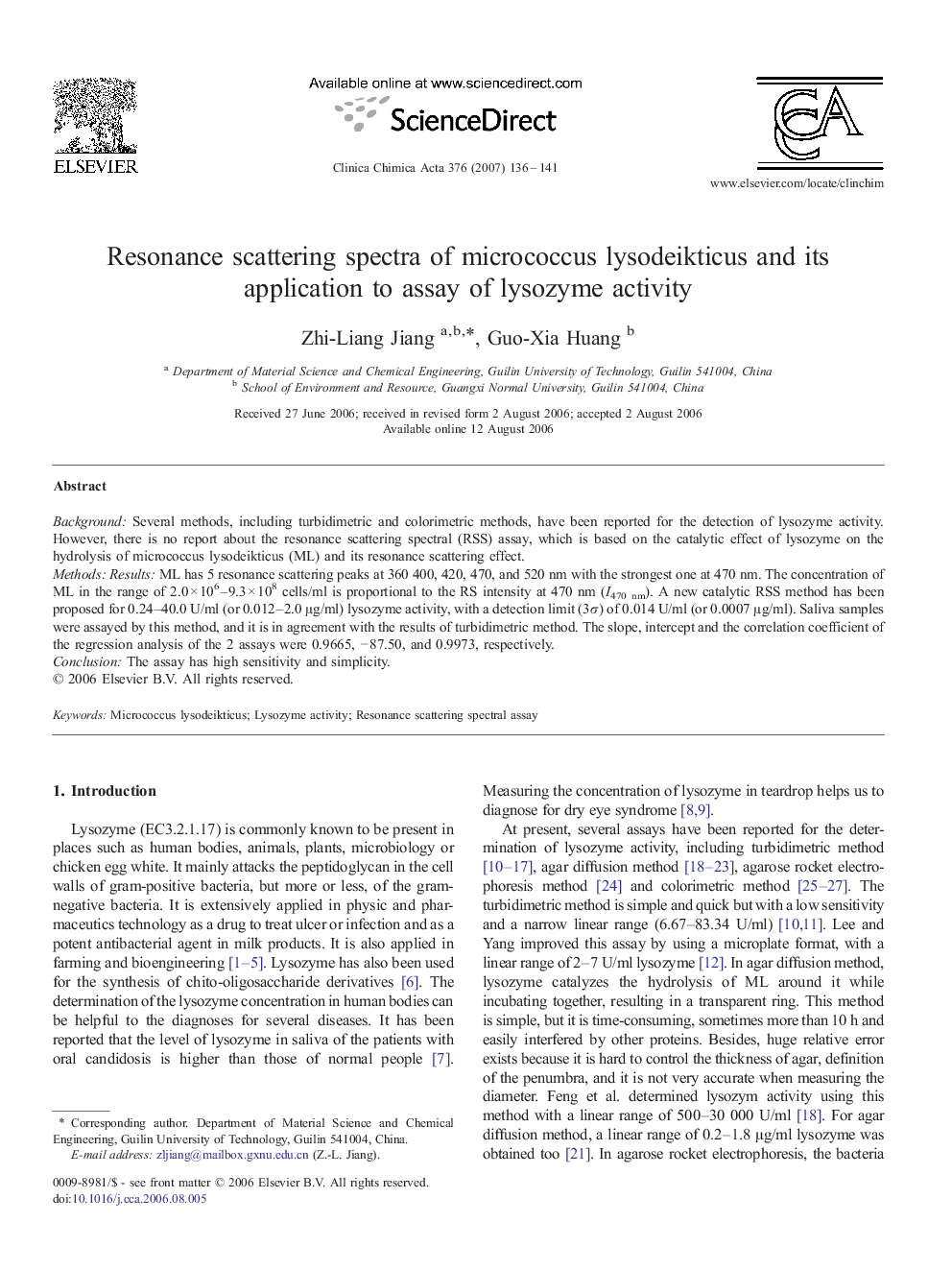| Article ID | Journal | Published Year | Pages | File Type |
|---|---|---|---|---|
| 1967865 | Clinica Chimica Acta | 2007 | 6 Pages |
BackgroundSeveral methods, including turbidimetric and colorimetric methods, have been reported for the detection of lysozyme activity. However, there is no report about the resonance scattering spectral (RSS) assay, which is based on the catalytic effect of lysozyme on the hydrolysis of micrococcus lysodeikticus (ML) and its resonance scattering effect.Methods: ResultsML has 5 resonance scattering peaks at 360 400, 420, 470, and 520 nm with the strongest one at 470 nm. The concentration of ML in the range of 2.0 × 106–9.3 × 108 cells/ml is proportional to the RS intensity at 470 nm (I470 nm). A new catalytic RSS method has been proposed for 0.24–40.0 U/ml (or 0.012–2.0 μg/ml) lysozyme activity, with a detection limit (3σ) of 0.014 U/ml (or 0.0007 μg/ml). Saliva samples were assayed by this method, and it is in agreement with the results of turbidimetric method. The slope, intercept and the correlation coefficient of the regression analysis of the 2 assays were 0.9665, − 87.50, and 0.9973, respectively.ConclusionThe assay has high sensitivity and simplicity.
